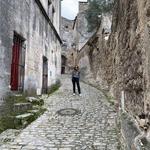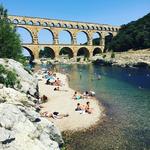Elysha & Emmanuel
Things To Do

Saint-Paul Asylum, Saint-Rémy (Van Gogh Asylum)
You can visit the asylum where Vincent van Gogh voluntarily stayed, producing around 150 paintings. From his room and the surrounding grounds, you can see the landscapes that inspired many of his works. There are also some Roman ruins just outside the asylum. The ruins are known as Glanum and form part of the ancient Graeco-Roman city that once stood there. St Remy is also a beautiful town and worth while exploring.

Tarascon Castle
The Château de Tarascon is a medieval castle in Tarascon. If you are lucky enough you may spot the Tarasque. According to the Golden Legend, the beast has a lion-like head, a body protected by turtle-like body, bear claws, a serpent's tail, and can expel a poisonous breath.

Abbaye of Saint-Roman
The Abbey of Saint-Roman (French: Abbaye de Saint-Roman) is a cave monastery. You can discover the chapel and rock cells, large rooms, cisterns and silos, vestiges of troglodyte monastic life. If you want to brave the spring heat you can cycle here from Tarascon or Beaucaire. Pack a picnic and lots of water (its very hilly).

Arles
The Roman and Romanesque Monuments of Arles are listed as UNESCO World Heritage Sites. Many artists have lived and worked in this area, including Pablo Picasso, Paul Gauguin, Jacques Réattu and Vincent van Gogh.

Carrières des Lumières
The immense underground quarries of Les Baux-de-Provence, world-famous for having served as the setting for Jean Cocteau's "The Testament of Orpheus", have been converted into a sound and light show. Les Baux-de-Provence, located in the Alpilles mountains, is classified as one of France's most beautiful villages. Definitely worth visiting before or after the Carrières des Lumières experience.

Nîmes
Dubbed the most Roman city outside Italy, Nîmes has a rich history dating back to the Roman Empire. You can spend the day here exploring Roman sights with lots of shopping and great food.

Uzès
Uzès is famed for its well-preserved medieval architecture, delightful shops, plentiful galleries, and many local restaurants. The Haribo Museum in Uzes is also a must-visit for all sweet lovers. Just a short drive from Uzes, the Pont du Gard stands as an incredible testament to Roman engineering prowess. And is perfect for an afternoon swim.